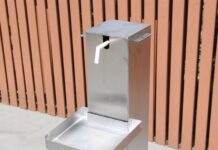One of the obligations of bringing a cat into your house is to provide them the flexibility to come and leave as they like. A cat flap, or cat door, is an ideal solution, allowing your furry friend to enjoy the outdoors without you having to play doorman. Installing a cat flap is a manageable DIY project that can be accomplished over a weekend with the right tools and some know-how. This guide will take you through the process step-by-step, ensuring a safe and successful installation that you and your cat will appreciate.
Preparation and Planning
Before diving into the cat flap installation, it’s crucial to take some time to plan and gather the necessary materials. Here’s what you’ll need:
- Cat flap kit: Choose a flap that suits your needs and is appropriate for your cat’s size.
- Tools: A screwdriver, jigsaw or keyhole saw, tape measure, pencil, drill with bits, and possibly a jigsaw.
- Safety equipment: Gloves and safety goggles.
Once you have your materials ready, consider the placement of the cat flap. The ideal location is typically a ground-level door leading to your yard or garden, which your cat can easily access. Ensure there are no obstructions like pipes or electrical wiring where you plan to install the flap.
Marking and Cutting the Hole
Measure twice, cut once—this adage is particularly apt when installing a cat flap. Follow these steps:
- Mark the outline: Using the template provided with your cat flap kit, mark the outline on the door. Use a level to ensure it’s straight.
- Drill pilot holes: Drill pilot holes at the corners of the outline. These holes will guide your cutting and help prevent splintering.
- Cut the hole: If your cat flap kit includes a jigsaw, use it to cut along the marked outline carefully. If not, a keyhole saw will also work, though it may require more effort.
After cutting, smooth the hole’s edges with sandpaper to prevent rough spots that could harm your cat or snag their fur.
Installing the Cat Flap
With the hole cut, it’s time to install the cat flap itself:
- Assemble the cat flap: Follow the manufacturer’s instructions to assemble the cat flap components.
- Fit the cat flap into the hole: Insert the cat flap into the hole from the outside of the door. Ensure it fits snugly.
- Secure the cat flap: Use the screws provided to secure the cat flap in place. Tighten them evenly to ensure a firm fit.
- Test the flap: Before fully tightening the screws, test the cat flap to ensure it opens and closes smoothly.
Final Touches and Considerations
Once the cat flap is securely installed, there are a few final steps to complete:
- Weatherproofing: If your cat flap is not weatherproof, consider adding a weather seal around the edges to prevent drafts and water ingress.
- Training your cat: Introduce your cat to the cat flap gently. Use treats or toys to encourage them to approach and use the flap. Be patient; some cats may need time to become comfortable with it.
- Regular maintenance: Periodically check the cat flap for any signs of wear or damage. Clean the flap and its surrounding area to ensure smooth operation.
Choosing the Right Cat Flap
Selecting the appropriate cat flap for your home and your cat’s needs is crucial for a successful installation. Consider the following factors:
- Size: Ensure the cat flap is large enough for your cat to pass through comfortably. Measure your cat’s dimensions if necessary.
- Type: Various cat flaps are available, including manual and microchip-operated flaps.
- Material: Opt for a sturdy and weather-resistant material, such as plastic or composite, for longevity and durability.
Research different brands and read customer reviews to find a cat flap that suits your specific requirements and budget.
Safety Considerations
While installing a cat flap is generally safe, there are a few considerations to keep in mind:
- Height: Ensure the cat flap is installed at a height that allows your cat to enter and exit quickly without jumping excessively.
- Security: Consider the security implications of having a cat flap. Some homeowners opt for microchip-operated flaps to prevent other animals from entering their homes.
- Supervision: When your cat starts using the cat flap, supervise it initially to ensure its comfort and safety.
These precautions will help ensure a safe and enjoyable experience for you and your cat.
Conclusion
Installing a cat flap is a rewarding DIY project that enhances your home and your cat’s quality of life. By following this step-by-step guide, you can ensure a successful cat flap installation that provides your feline friend with the freedom they crave while maintaining the security of your home. Remember to plan carefully, use the right tools, and take your time throughout the process. With minimal adjustment, you’ll soon delight in observing your feline effortlessly accessing and utilising its newly installed door.
Whether you’re a seasoned DIY enthusiast or new to home improvement projects, installing a cat flap is an achievable task that will make a big difference in your pet’s happiness. Start planning today, and soon, you and your cat will enjoy the benefits of a well-installed cat flap!
























